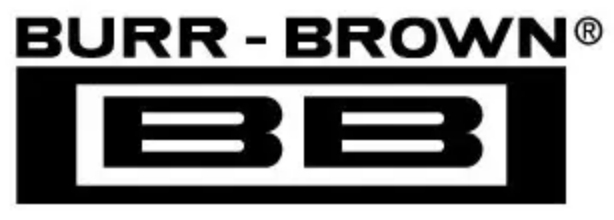Normally, input bias current is approximately 70pA; however,
input voltages exceeding the power supplies can cause
excessive current to flow in or out of the input pins. Momen-
tary voltages greater than the power supply can be tolerated
if the input current is limited to 10mA. This is easily accom-
plished with an input resistor, as shown in Figure 1.
Current-limiting resistor
required if input voltage
exceeds supply rails by
≥
0.5V.
I
OVERLOAD
10mA max
V
IN
5kΩ
swing limit of a single-supply op amp. A good single-supply
op amp may swing close to single-supply ground, but will not
reach ground. The output of the OPA334 or OPA335 can be
made to swing to ground, or slightly below, on a single-
supply power source. To do so requires use of another
resistor and an additional, more negative, power supply than
the op amp’s negative supply. A pull-down resistor may be
connected between the output and the additional negative
supply to pull the output down below the value that the output
would otherwise achieve, as shown in Figure 2.
+5V
V+ = +5V
OPA335
V
OUT
OPA335
V
IN
V
OUT
R
P
= 40kΩ
FIGURE 1. Input Current Protection.
INTERNAL OFFSET CORRECTION
The OPA334 and OPA335 series op amps use an auto-zero
topology with a time-continuous 2MHz op amp in the signal
path. This amplifier is zero-corrected every 100µs using a
proprietary technique. Upon power-up, the amplifier requires
one full auto-zero cycle of approximately 100µs to achieve
specified V
OS
accuracy. Prior to this time, the amplifier
functions properly but with unspecified offset voltage.
This design has remarkably little aliasing and noise. Zero
correction occurs at a 10kHz rate, but there is virtually no
fundamental noise energy present at that frequency. For all
practical purposes, any glitches have energy at 20MHz or
higher and are easily filtered, if required. Most applications
are not sensitive to such high-frequency noise, and no
filtering is required.
Unity-gain operation demands that the auto-zero circuitry
correct for common-mode rejection errors of the main ampli-
fier. Because these errors can be larger than 0.01% of a full-
scale input step change, one calibration cycle (100µs) can be
required to achieve full accuracy. This behavior is shown in
the typical characteristic section, see
Settling Time vs Closed-
Loop Gain.
Op Amp’s V– = Gnd
–5V
Additional
Negative
Supply
FIGURE 2. Op Amp with Pull-Down Resistor to Achieve
V
OUT
= Ground.
The OPA334 and OPA335 have an output stage that allows
the output voltage to be pulled to its negative supply rail, or
slightly below using the above technique. This technique only
works with some types of output stages. The OPA334 and
OPA335 have been characterized to perform well with this
technique. Accuracy is excellent down to 0V and as low as
–2mV. Limiting and non-linearity occurs below –2mV, but
excellent accuracy returns as the output is again driven
above –2mV. Lowering the resistance of the pull-down resis-
tor will allow the op amp to swing even further below the
negative rail. Resistances as low as 10kΩ can be used to
achieve excellent accuracy down to –10mV.
LAYOUT GUIDELINES
Attention to good layout practices is always recommended.
Keep traces short. When possible, use a PCB ground plane
with surface-mount components placed as close to the de-
vice pins as possible. Place a 0.1µF capacitor closely across
the supply pins. These guidelines should be applied through-
out the analog circuit to improve performance and provide
benefits such as reducing the EMI (electromagnetic-interfer-
ence) susceptibility.
ACHIEVING OUTPUT SWING TO THE OP AMP’S
NEGATIVE RAIL
Some applications require output voltage swing from 0V to a
positive full-scale voltage (such as +2.5V) with excellent
accuracy. With most single-supply op amps, problems arise
when the output signal approaches 0V, near the lower output
8
OPA334, OPA2334, OPA335, OPA2335
www.ti.com
SBOS245D

 BURR-BROWN [ BURR-BROWN CORPORATION ]
BURR-BROWN [ BURR-BROWN CORPORATION ]